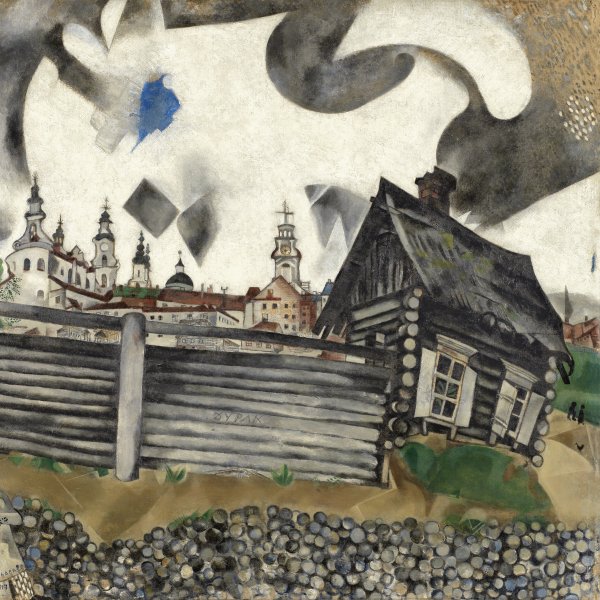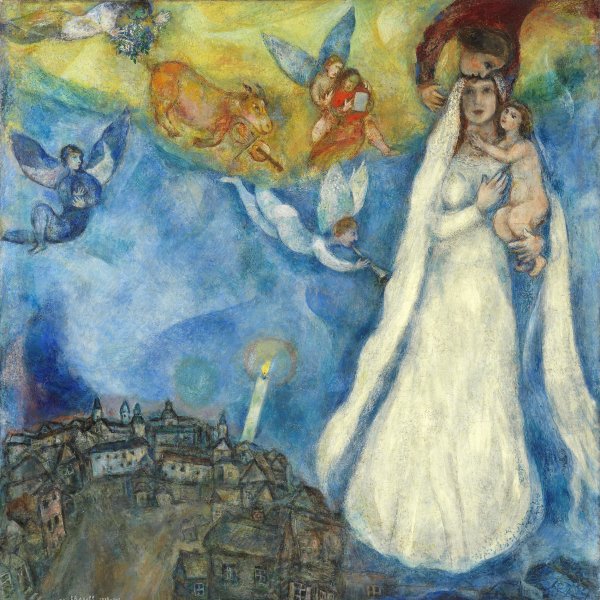Marc Chagall
Marc Chagall developed an expressive and colourful pictorial style that was closely linked to his own experiences and to the religious and popular traditions of the Russian Jewish community. He combined certain elements of the Cubist avant-garde, Fauvism, and Robert Delaunay’s Orphism to create a personal style that defies classification. The eldest of nine siblings, he trained as an artist in the city of Saint Petersburg, under Léon Bakst. In the summer of 1910 he travelled to Paris, and was deeply impressed by the galleries and Salons of the French capital. During the following years he showed his work at the Salon d’Automne and Salon des Indépendants. Guillaume Apollinaire introduced him to the Berlin dealer Herwarth Walden, who showed three of Chagall’s works at the first Herbstsalon held in Berlin in 1913, and whose gallery, Der Sturm, staged his first one-man show in 1914.
From Berlin Chagall travelled to Vitebsk, his hometown, where the war took him by surprise. In 1915 he married Bella Rosenfeld and held the post of director of Vitebsk Art School after the Russian Revolution. He was forced to leave the academy owing to differences of opinion with Kazimir Malevich, and became director of the Jewish State Theatre in Moscow in 1919.
Chagall abandoned Russia for good in 1922 and, after a short stay in Berlin, settled in France in 1923. He lived there for the rest of his life except for the period from 1941 to 1948, when he resided in the United States to avoid being deported. While he was in America, The Museum of Modern Art in New York held a retrospective of his work which established his reputation internationally.
Throughout his lengthy career he also worked in the field of illustration and experimented with all kinds of supports such as ceramic, relief and mosaics. He created the stage sets for various plays and operas and was intensely involved in designing stained-glass windows during the last thirty years of his life, among them those of Metz cathedral and the synagogue of the Hebrew University Hadassah Medical Centre in Jerusalem.








